Puberty
In the second half of the 7th century the royal power was in reality exercised by the palace mayors, in other words the owners of the castles and land. Out of their ranks sprouted a gifted military leader named Charles Martel (Charles the Hammer). A king in all but name Charles Martel (718-741) managed to win important battles that reunified the Frankish kingdom and repelled its enemies in the south (Muslims) and north (other Germanic people, Saxons e.g.). He was the founder of the Carolingian dynasty, grandfather of the great Charlemagne.
Charles Martel spent almost no time in Paris but nevertheless was buried at the Basilica of Saint Denis. His son Pepin the Short (r. 751–768) would be the first of the Carolingians to assume the role of the king. Although the center of political power had moved to Aachen, Paris continued to hold on to its ceremonial role. Pepin was first crowned in Soissons in 751. In 754 however he would be solemnly anointed by Pope Stephen II, who traveled to Paris to crown him for a second time in a lavish ceremony at the Basilica of St Denis.
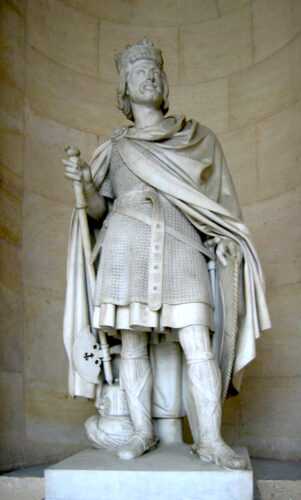
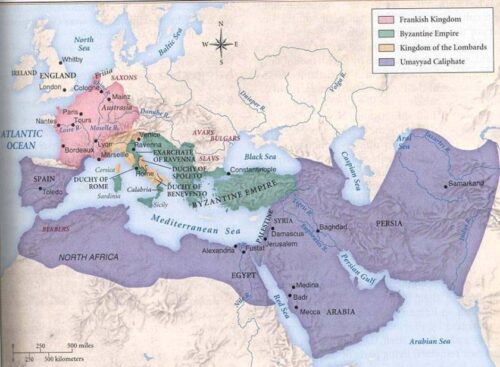

After the death of his brother in 771, Charlemagne became the sole ruler of the Frankish kingdom. In a few years time he would evolve into the single most important ruler of Western Europe since the Roman Age. The Carolingian Empire of Charlemagne became the connecting tissue of most Christian lands in the west, a counterpart of the Byzantine Empire to the East.
In 775 the reconstruction of the Basilica of St. Denis that had started during the reign of his father is completed and Charlemagne is present at the consecration of the new building in Paris. Although the emperor would rule from Aachen he became the agent of renaissance for classical learning throughout the empire. In 789 Charlemagne’s Admonitio Generalis required that schools be established in every monastery and bishopric, in which children can learn to read. A school promoting scholarship and literacy was set up by the British monk Alcuin, leading scholar and teacher at the Carolingian court in Paris. Monasteries which were able to produce teachers were also able to flourish. Many new abbeys were built including several around Paris.
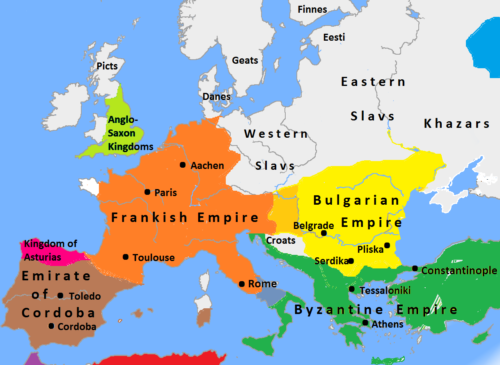
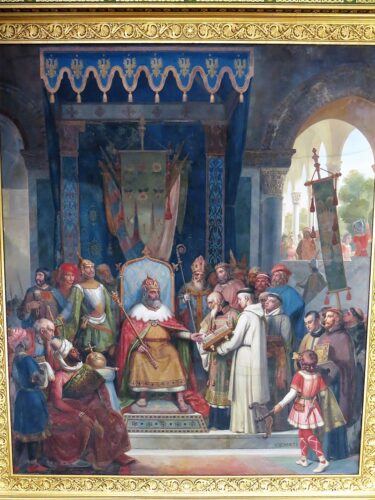
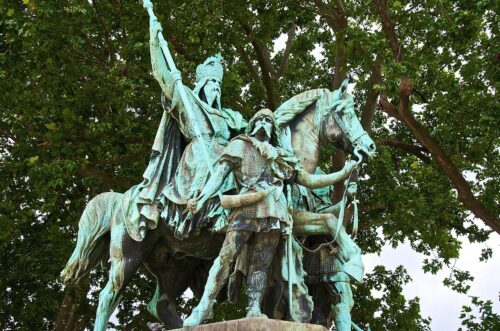
The abbeys wouldn’t help Paris much when the Viking raids started in the beginning of the 9th century. The Frankish frontier had been brought to contact with the pagan Danes after Charlemagne’s expansions. It was during his time (799) that the first Viking attack took place and it was due to his defense system that the second was repelled a few years after his death (820). After Charlemagne’s death (814) the Frankish kingdom went to his son Louis the Pious (reign 814 – 840). Even before Louis the Pious died, the kingdom was immersed in bloody civil wars. After his death in the year 840, the kingdom was divided in three (Paris became part of West Francia under Charles the Bald) and the civil wars were intensified. The pagan Danes (Vikings) were well informed about the situation in the neighboring Empire and grabbed the chance for a quick raid every time the power struggles in Scandinavia demanded a show of strength. (810, 820, 834 Antwerp and Noirmoutier 836, Rouen 841, Quentovic and Nantes in 842).

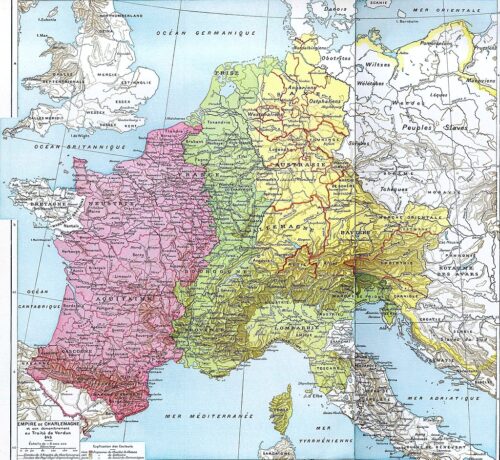
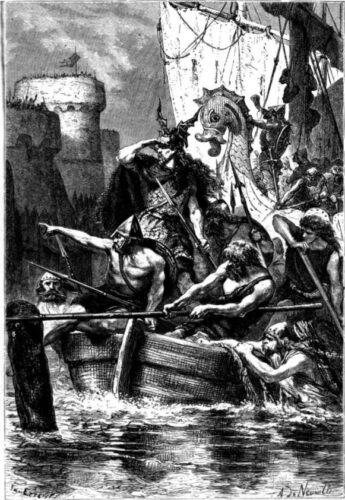
In 845 it was the turn of Paris. In March 5.000 Danes in 120 Viking ships under the leadership of a certain Ragnar (the famous Ragnar Lodbrok according to the tradition) entered the Seine and raided Rouen. Charles the Bald (King of West Francia 840-877) was not willing to let the Royal Abbey of St. Denis fall prey to the Viking hoard but with the old Roman wall being in a pitiful state the city was in essence unprotected. The Parisians would not follow the tradition of St. Genevieve this time. After the Vikings finished with the Frankish army sent to protect the Abbey of St Denis they took Paris and looted everything that hadn’t been taken away by the fleeing Parisians.Holding the city as a ransom the Vikings managed to extract a huge amount of silver and gold (about 2.5 tons) by Charles the Bald and only then they retreated. The story would repeat itself in 856, 857, 858, 861 and 869.
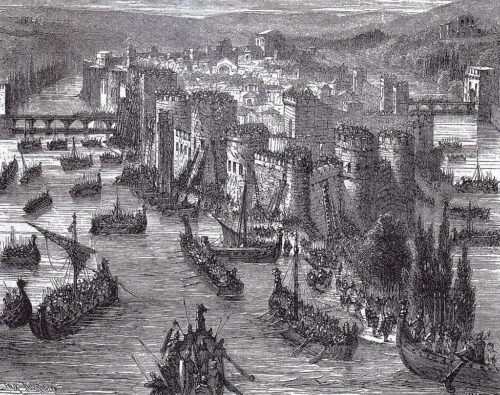
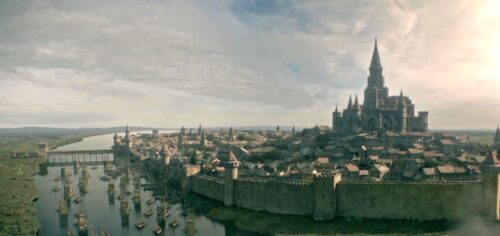
At last in 870 Charles the Bald was determined to act decisively. He ordered the construction of fortified bridges to be put up at all rivers to block the Viking incursions. The Grand Pont that connected Île de la Cité (Notre Dame Bridge today) to the right bank and the Petit Pont (Cardinal-Lustiger Bridge today) that connect the island to the left bank were rebuilt accordingly.
With the population of the city hitting a low point due to the invasions and the heirs of the Frankish kingdom proving to be short-lived or weak, the power in Paris was in reality exercised by Count Eudes, the first of the Robertian Dynasty that would rule France for a millennium. Coount Eudes or Odo was greatly supported by the noble abbot of St. Denis named Gozlin, who in return was appointed Bishop of Paris by Odo in 883. It was Bishop Gozlin who foresaw the danger of a new attack just in time to avert a new disaster. Relying on the earnings created by the relics of St Genevieve & St Germain he managed to restore the city’s decrepit wall and organize its defense, a year before the Viking ships were again seen on the horizon at the end of 885.
Despite the intimidating volume of the Viking fleet (About 700 ships carrying as much as 40.000 warriors) this time the city would make a stand. The siege lasted for nearly a year and the plague started taking more lives than the Vikings but finally the army of Odo managed to save the city and scatter the Viking army. Bishop Gozlin was among the victims of the plague but Odo would go on to be King of the Franks in 888.
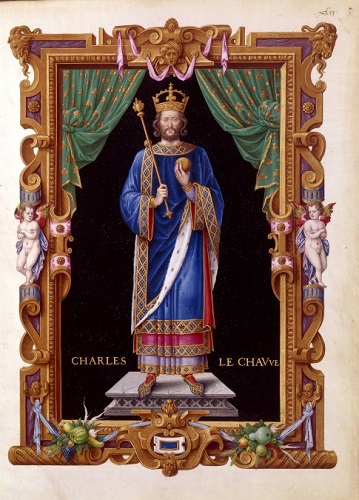
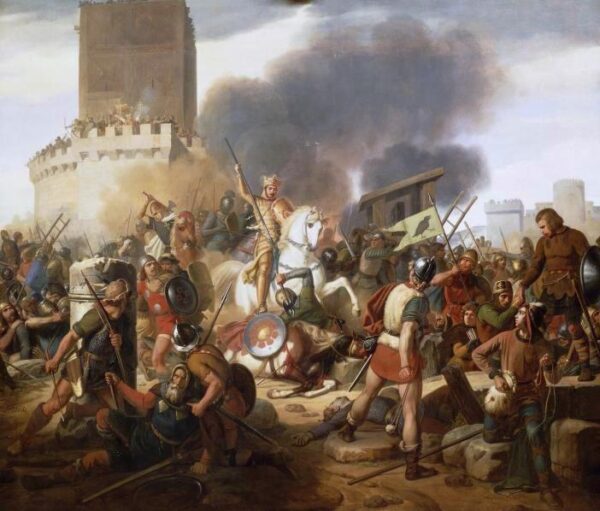
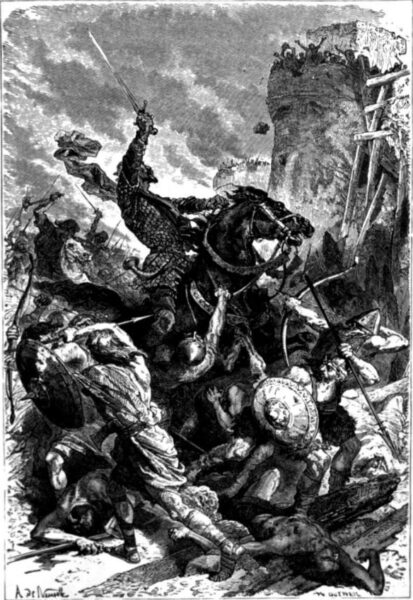
The Viking raids continued well into the first years of the 10th century. The Robertians or Capetians kept their position as rulers of Paris although they ceded their claim to the French throne to the last of the Carolingian dynasty. After 911 and the Treaty of Saint-Clair-sur-Epte the raids finally stopped and life in Paris started to take a normal pace. Despite that what followed was a rather harsh period marked by famines, floods and epidemics until the end of the 10th century.

